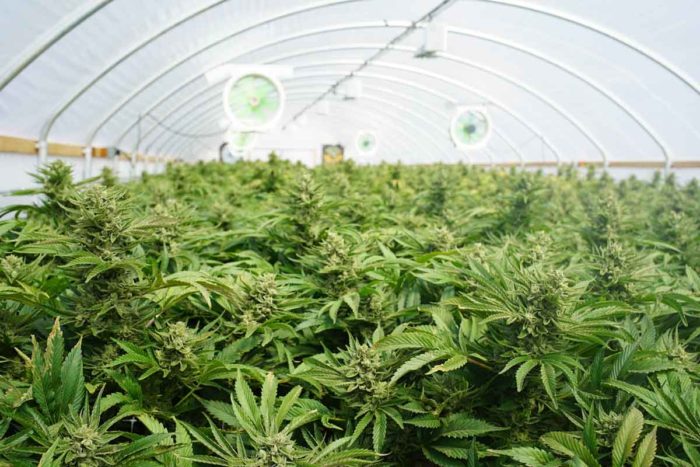Proliferation of marijuana ads alarms addiction researchers
More than half of young marijuana users encounter online ads, survey finds
 Getty Images
Getty ImagesShown is a legal, indoor marijuana-growing operation in Washington state. As more states legalize marijuana for recreational and medical users, researchers at Washington University School of Medicine have found that ads for marijuana and marijuana dispensaries are getting more common, especially on social media platforms.

As more states have legalized marijuana, advertising for the drug has become more common. In a new study, researchers at Washington University School of Medicine in St. Louis report that more than half of young pot users they surveyed have seen marijuana ads — either online or in more traditional forms of advertising such as billboards and print media.
“Advertising can be powerful,” said the study’s first author, Melissa J. Krauss, a research statistician in the Department of Psychiatry. “That’s why we’re concerned that so many young adults are seeing ads for marijuana. It’s also likely that younger, more vulnerable kids are seeing ads, too.”
The research is published March 29 in the journal Drug and Alcohol Dependence.
Marijuana is now legal in more than half of U.S. states. Some states allow medicinal use, while eight states have legalized recreational use.
In an online survey of 742 young adults ages 18-34 who reported recent marijuana use, the researchers found 54 percent had been exposed to or even sought out marijuana advertising in the previous month. Laws regarding marijuana advertising vary from state to state, but most of those who encountered pot advertising said they saw the ads online, either on websites or social media. Even in states where the ads are restricted, online advertising easily crosses state lines. Ads for marijuana also are prohibited on Facebook.
“But you can go on Facebook and discover pretty quickly that ads and information about dispensaries are there,” Krauss said.
Marijuana use can develop into a disorder. According to the National Institute on Drug Abuse, about 30 percent of those who use marijuana have some level of a marijuana use disorder, which can be associated with dependence on the drug.
Although the survey group only included people who said they used pot and was not a nationally representative sample, Krauss called it alarming that so many people had seen ads for pot, even in places where such ads are supposed to be prohibited.
People who said they actively had sought out marijuana advertising tended to be users of medicinal marijuana products.
“Individuals who seek out ads also are more likely to use novel marijuana products, such as edibles and concentrates and are more likely to be heavy users,” Krauss said.
The people least likely to be exposed to marijuana ads were those who used pot recreationally and lived in states where marijuana use is illegal. These users were more likely to smoke pot rather than use edibles or concentrates.
“As more states legalize marijuana, we should be vigilant about ads that promote the drug, especially if those ads are aimed at young people,” Krauss said. “We need to protect those who are most vulnerable to the consequences of marijuana use and abuse.”






